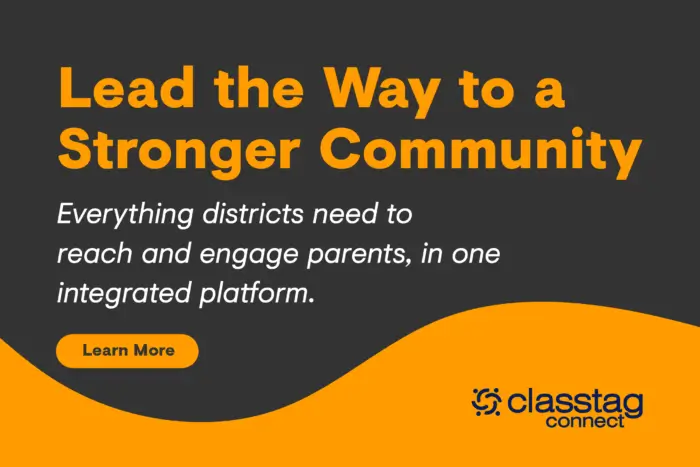

Chronically absent students and the resulting truancy within schools have been an issue, nevermind an added pandemic that forces distance learning. It is well understood that reducing digital truancy will have long-term benefits for student achievement, but it also affects long-term district plans.
Digital-truancy and Why it Matters
“Digital truancy” is when students do not participate in the lessons provided by their teacher or school on any given day. With Covid-19, where many students learn from home, several brand new reasons account for digital truancy. Issues such as internet connectivity, unreliable phones or devices, lack of caregivers, taking care of siblings, Covid-19 related illnesses, or increased homelessness hinders student attendance.
COVID-19’s Affect on Truancy
National data says: the number of chronically absent students (who miss two days/month of the school year or 10% of school) increases year after year. In 2015-16, around 8 million students (16% of the entire student population in the nation) missed 15 or more days of school; 800,000 more truant students than in the 2013-14 school year. Just recently, truancy has only been included as part of federal education policy, added in 2018.
In a recently published survey by EdWeek, COVID-related absenteeism has doubled from 5% to 10% per day as a national average. School districts with high poverty remain a driving factor in causing these absences, ultimately widening the equity gap. It is also important to note that chronically absent students live in all areas of the country; rural, urban, and suburban.
How Truancy and Lack of Enrollment Affects District Budgets
No matter the reason, chronic absenteeism cannot persist the way it has been. Many districts rely on the money that states provide for every student who attends school. While some families have chosen to switch to the homeschool model, others have just seeped through the cracks without the districts knowing.
Several newly released articles showed student enrollment is down in several states. According to Arizona’s public school district and charter school data, about 50,000 students “vanished,” and enrollment is down about 5% between last year and this year. “A loss of students will result in loss of funding. Districts and charters with more students will receive more funding because calculating funding is per student.”
In Texas, student enrollment is also down this year and could lose about $200 million in total funding. Based on preliminary data, about 4% of the state’s students are missing. Outside of Dallas, Texas, Richardson School District has done everything from knocking on doors to calling and visiting locations where students frequent. Despite these exhaustive efforts to locate every student, 1,900 students are missing. “In Texas, where funding is based on the number of students who show up for class each day, the 1,900 missing students mean Richardson ISD could lose $10.4 million in state funds.”
When students are absent, regardless of the year, school districts lose money.
How Family Engagement can Reduce Digital Truancy
Holding Families Responsible Through Truancy Court
Attendance Works, a national group dedicated to reporting attendance data within schools, recently stated in an N.Y. Time Article:
“many districts had to ease up on harsh truancy rules– which can involve fines and even jail for families and, sometimes, students –during the pandemic out of concern that students had legitimate obstacles to attending class.” – Hedy Chang, Director of Attendance Works
Not that truancy court should be the only motivating factor for families to get their students to school, but it might increase attendance numbers. In the time of Covid, however, the truancy court is being canceled. Thus it is important to note that truancy court has also been suspended in some states, including Washington and Missouri, due to students learning from home. These absences are called “non-truancy remote learning absences.”
If truancy court isn’t happening, one of the motivators has also been taken away. While this can be a powerful motivator, it should be a last resort. Punitive measures often don’t get results, especially when more access, equity, and understanding are needed.
Reduce Digital Truancy with Engaging Families
Many families might not be aware of the options presented to them or the services schools can provide, even during remote learning. According to a survey conducted by Tripod Education group that surveyed over 21,000 families about communication with their school district in New Mexico before and after the Covid-19 shutdowns, families were largely dissatisfied with the amount of communication, or lack of communication, from their school districts after the shutdown, with only 4% of families saying they are satisfied.
School districts need to figure out a way to either increase engagement with families more efficiently. This pandemic creates an opportunity for school districts to evaluate their communication methods with families.
Luckily, there is a two-way communication platform that districts can use to engage with families district-wide. ClassTag Connect is a Family engagement platform that can reach families, communicate important information, send grades, gather data on the effectiveness of different communication strategies, talk with teachers, assign homework for students, and more. With ClassTag Connect, districts can keep these families informed, engaged, and satisfied to keep their students in school.
School districts cannot afford the large budget cuts looming after schools with large digital truancy rates.
Let ClassTag Connect be the solution.

Stay Connected
News, articles, and tips for meeting your district's goals - delivered to your inbox.


















